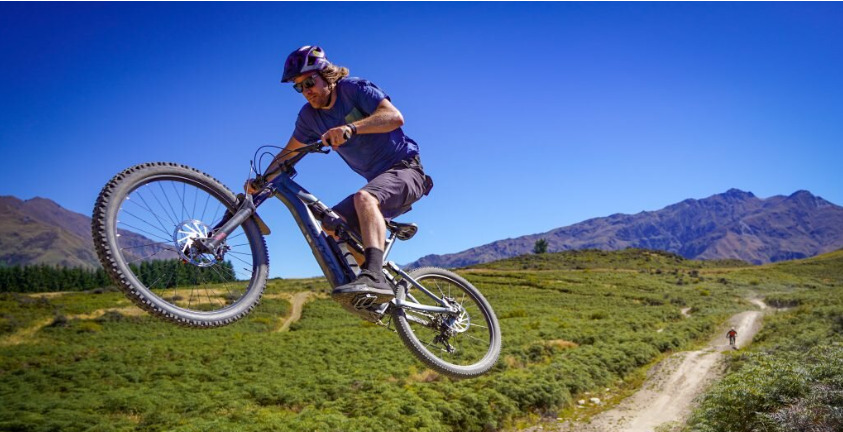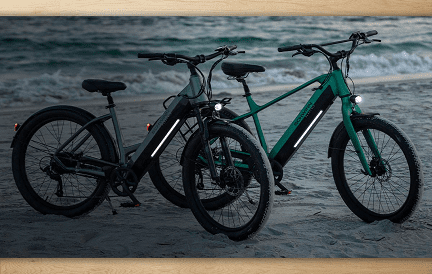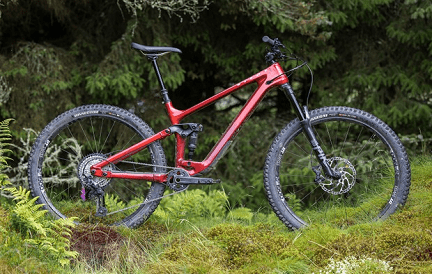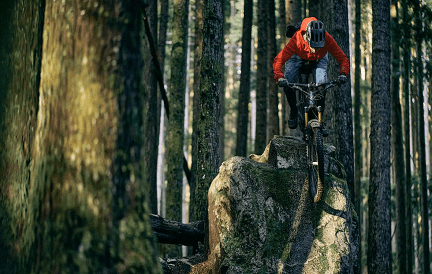Wheels are arguably one of the best modifications you can make to your mountain bike. Thus, it would be a difficult task to find the best 29 inch mountain bike wheels for the trail, all-mountain, or enduro riding. This is because wheels are one of the most important components of a mountain bike.
- Part 1: Introduction to Frames of 29 inch Mountain Bike Wheels
- Part 2: Considerations for Frame Selection
- Part 3: What are the Benefits of 29 inch Wheels
- Part 4: What are the Drawbacks of 29 inch Wheels
- Part 5: Consideration for Price Selection (Riders’ Perspective)
- Part 6: Frequently asked Questions
- Part 7: A Brief Lesson in History: Where did Wheels Measuring 29 inch Come from
- Part 8: Conclusion
Part 1: Introduction to Frames of 29 inch Mountain Bike Wheels
Wheel weight, rim width, and stiffness are all factors that can have an impact on how well your bicycle handles, sometimes for the better and other times for the worse. Investing in a brand-new wheelset is likely going to be the most expensive upgrade you make. So, it’s important to make a decision that fits both your budget and the way you ride.

When it came to purchasing a mountain bike, the majority of riders didn’t give wheel size much thought for a number of years. Since all manufacturers created mountain bike wheels based on a standard 26 inches.
Then there are two wheel sizes that have often taken precedence over wheels that measure 26 inches in diameter. The first wheels to appear on the scene were 29 inches wheels in diameter, then a few years later, 27.5 inch wheels, also known as 650b wheels, took their place.
Mountain bikes come in a wide range of sizes, and the one that is best for you will primarily be determined by the kinds of trails and terrain that you want to ride on.
Part 2: Considerations for Frame Selection
For people who don’t know, the size of a mountain bike wheel is the approximate diameter. It is measured from the edge of one tire to the edge of the other.
The diameter of mountain bike 29 inches wheels rims is identical to the diameter of road bike 700-inch rims. It has been the industry standard since our tarmac-loving relatives settled on 27-inch outer rim diameter hoops. On the other hand, road 29-inch rims are narrower, weaker, and lighter than their mountain bike counterparts will be.
Some larger 650b/27.5-inch wheels and tyres may come close to having an outside diameter that is comparable to that of a 29er. However, it is improbable that you will find a 26-inch wheel and tire combination that has a diameter that is comparable to that of a 29er. However, that wheels with a diameter of 29 inches are the largest normal mountain bike wheels now available.
1. History of 29er Wheels
When they appeared in twenty years ago, wheels with a diameter of 29 inches, also referred to as “29ers.” They didn’t generate much of a buzz. After being initially linked with cross-country bikes, they quickly became associated with terrain.
2. Improvement
Now, many years later, the terrain has undergone a dramatic transformation. People can find 29-inch wheels on a wide variety of mountain bikes, ranging from leisure mountain bikes to all-mountain crushers. They come with a predictable set of benefits as well as cons, but they can be a wonderful option to wheels that are 27.5 inches in diameter.
Part 3: What are the Benefits of 29 inch Wheels
1. Theory
The angle of the curve is the primary factor responsible for the more even rolling of larger hoops. First, roll a shot glass across the table. Then switch to a pint glass and do the same thing. A pint glass is by far the more convenient option.
A lesser angle of curve bridges the gaps that generate hard edges. Thus, it isn’t as influenced by bumps and dips as a steeper angle of curve would be. Because of this, riding down a flight of stairs on a BMX bike is far more challenging.
If one were to follow this line of reasoning to its logical conclusion, one could create a wheel that is large enough to fill the sharp-edged spaces that make up a sequence of steps and roll the edges like a slope.
2. Consideration of 29 inch Wheels MTB
There are a lot of things to think about in this situation. When compared to a standard 26-or 27.5-inch bike, a normal 29er will provide a sensation of greater stability. This is due in part to the longer wheelbase and the longer rear end. Both are necessary to make room for the larger wheels.
However, it is also due to the fact that your bottom bracket is further below the wheels’ axles. It is referred to as “BB drop,” than it is on bikes with 26-inch and 27.5-inch wheels. Although the wheel axles are around 1.5 inches higher on 29ers than they are on 26-inch wheeled bikes, you are still sitting lower between the wheel axles on a 29er wheels.
Thus, an MTB 29 wheels with a rider on board is actually more stable than a big-wheeler on its own. Since the rider’s body weight is distributed along an axis that is below the wheels’ axles. This is the case even though a big-wheeler on its own typically has a higher gravity center than smaller-wheeled bikes.
Since the introduction of the first 29ers, designers have made tremendous strides in terms of how the geometry influences the handling of the bikes. It is now possible for a 29er to be just as responsive, quick to turn, and quick to respond as most bikes with 26- or 27.5-inch wheels.
Part 4: What are the Drawbacks of 29 inch Wheels
To sum up, it’s becoming clear that riding a bike with 29 inches wheels has a relatively small number of downsides.
However, due to their increased mass, vehicles with larger wheels and tires have a more difficult time getting up to speed. They will have an easier time rolling over square-edged bumps. While they won’t be able to accelerate as quickly down the opposite sides of the hump.
You should also decide if it would be better for you to ride a longer and bigger bike and weigh the pros and cons of the different geometry changes that would be needed to fit the bigger wheels.
Part 5: Consideration for Price Selection (Riders’ Perspective)
Regardless of a person’s skill level or the activity they most enjoy, there is a good chance that they will benefit from riding on wheels measuring 29 inches.
1. Beginners
For riders who are beginners, having better grip and stability will make it easier for them to achieve faster speeds and handle difficult terrain.
2. Intermediate Riders
You will discover that if you are an intermediate rider, you should be able to experience the same benefits as novices, but you will be able to ride even more quickly. It is possible to say the same thing about people who have great levels of expertise.
3. Cross-country Events’ Riders
Riders who compete in cross-country events will appreciate the improved ride quality and faster rolling speed of the bike. People who ride trail bikes, all-mountain bikes, or enduro bikes will have the ability to ride faster.
Furthermore, they even have more grip, and brake later, and their bikes will feel smoother and faster than those with smaller hoops.
4. Downhill Riders
All downhill riders agree that large-wheeled bikes are smoother, quicker, and easier to handle. This could be because of the late adoption and delayed development of the technology.
However, if you ride tight switchbacks at 180 degrees all day long, it is highly unlikely that you will profit from having wheels that are 29 inches in diameter.
Part 6: Frequently asked Questions
1. Ride Experience
29-inch wheels are easier to roll over trail hazards than 27.5-inch wheels. Since the lower attack angle that 29ers have. Because of this, the ride will be somewhat smoother. It will take slightly less effort to keep the bike going.
People frequently compare 29er wheels to monster trucks, which might be seen as a praise when you’re facing obstacles like roots and pebbles. With these qualities, a bike is not only stable at high speeds, but it also makes you feel a lot more confident. Especially on singletrack that is more technically difficult.
However, the increased stability does come at the cost of some significant concessions. Because of their increased weight and size, 29ers can be more difficult to manage on tight and twisty trails. This is especially true for riders of smaller stature, who may find it difficult to wrangle their bike due to the increased weight and size of the 29er.
Moreover, although many bicycle manufacturers have gone to great pains to guarantee that 29ers can accommodate riders of a variety of heights, these rigs are still quite large. In the end, they can frequently be too much bike for many shorter riders.
2. Performance advantages and disadvantages of 29 inch mountain bike wheels
a. Capacity
The capacity of wheels with a diameter of 29 inches mountain bike wheels to maintain momentum, is one of the most tangible performance benefits offered by these wheels. This is true on trails that are primarily straight. They have only a few twists that are sharp enough to disrupt your flow.
Furthermore, we’re not just talking about the downhill parts here—29ers also do a decent job of keeping momentum going when you’re climbing. Traction is a significant factor in this equation.
Since 29ers have a wider contact patch with the ground, this equates to more rubber making contact with the path at any given location. This may be something that is only noticeable to the most observant riders. However, it is one of the reasons why professional mountain bikers typically use wheels that are 29 inches in diameter.
b. Maintenance
Having said all of that, although 29ers are obviously quite good at maintaining their speed, they are not very good at building it up. To put it another way, it takes more work to move a heavy object. Wheels that are 29 inches in diameter are no exception. Therefore, if your trails involve a lot of slowing down and accelerating, it may be more beneficial to investigate the possibility of using 27.5-inch wheels instead.
3. Recommendations Regarding 29 inch mountain bike
a. Price Point
As is the case with 27.5 bikes, a handful of fantastic 29ers can be found at virtually every price point. Those who are just getting started would do well to invest in a bike like the Giant Talon 29 4. It can be purchased for $600 and features Tektro disc brakes and a 100-millimeter fork. The Santa Cruz Chameleon 29 D (which costs $2,399) is a hardtail mountain bike. We believe it is worth looking into if you want to buy a trail-ready, aggressive model.
Moving up to a full-suspension alternative, the YT Jeffsy 29 Core 2 (priced at $2,999) is a partner that is both adaptable and very capable. It comes at a great value. Finally, but certainly not least, you ought to put Yeti’s SB150 XO1 ($9,500), which is designed specifically for enduro racing. Even though it is obviously expensive, this carbon bike is not going to slow you down in the least.
Part 7: A Brief Lesson in History: Where did Wheels Measuring 29 inch Come from
1. Background
Back in 1986, Dr. Alex Moulton created an all-terrain bicycle with 20-inch wheels. Unhappily, the Moulton ATB suffered from a flaw that was fairly fundamental in nature. Many small dips and bumps bothered its 20-inch wheels because they would have been hard to notice on 26-inch wheels.
Consequently, despite the fact that Moulton’s suspension provided comfort and control in an era when the majority of mountain bikes were entirely rigid, his ATB did not last very long.
If you have ever tried riding a BMX on a trail designed for mountain bikes, you are aware that it is not a very enjoyable experience. When riding through rough terrain, it is more difficult to control a vehicle with smaller wheels.
2. Consider the Implications of 29 inch MTB Wheels
If everything else stays the same, a larger wheel with a shallower angle of bend will roll over uneven ground more easily. However, is it safe to infer that wheels with a greater diameter will travel through rough terrain at a faster rate? Not necessarily. When you add something that messes with the “all other things being equal” clause, that’s when things get complicated. Since those other things almost never are.
When the first popular 29er wheels came out, they had a lot of potential. However, they were limited by a small number of suspension forks and a geometry that tried to be like that of 26ers.
Gary Fisher’s early Genesis measurements were promising. However, it has only been in the last couple of years that designers have understood the differences between the best geometry for a 26-inch wheel and an MTB 29 wheels.
It’s not just a matter of playing about with the frame angles. There is a correlation between the length of the fork, stem, top tube, and bottom bracket and the overall stability.
Part 8: Conclusion
Take suspension. In principle, all manifestations of it, including large tyres, can give the impression that the terrain is smoother. However, mounting suspension around wheels measuring 29 inches wide is more difficult than mounting suspension around wheels measuring 26 inches wide.
There is insufficient space for inserting things into frames if they are not redesigned. To get the most out of a bike with larger wheels, people need to adjust the frame geometry.









